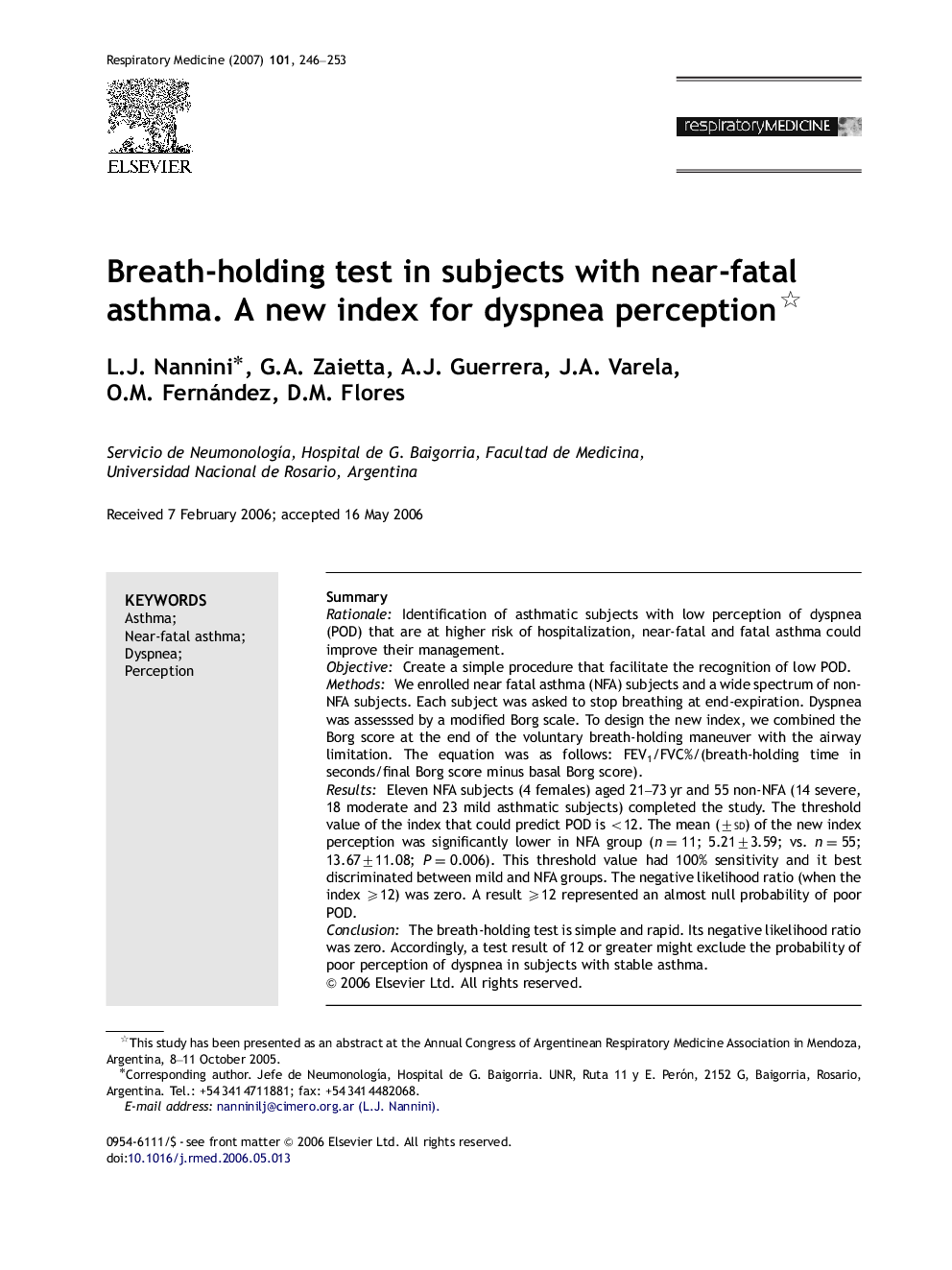| Article ID | Journal | Published Year | Pages | File Type |
|---|---|---|---|---|
| 4211902 | Respiratory Medicine | 2007 | 8 Pages |
SummaryRationaleIdentification of asthmatic subjects with low perception of dyspnea (POD) that are at higher risk of hospitalization, near-fatal and fatal asthma could improve their management.ObjectiveCreate a simple procedure that facilitate the recognition of low POD.MethodsWe enrolled near fatal asthma (NFA) subjects and a wide spectrum of non-NFA subjects. Each subject was asked to stop breathing at end-expiration. Dyspnea was assesssed by a modified Borg scale. To design the new index, we combined the Borg score at the end of the voluntary breath-holding maneuver with the airway limitation. The equation was as follows: FEV1/FVC%/(breath-holding time in seconds/final Borg score minus basal Borg score).ResultsEleven NFA subjects (4 females) aged 21–73 yr and 55 non-NFA (14 severe, 18 moderate and 23 mild asthmatic subjects) completed the study. The threshold value of the index that could predict POD is <12. The mean (±sd) of the new index perception was significantly lower in NFA group (n=11; 5.21±3.59; vs. n=55; 13.67±11.08; P=0.006). This threshold value had 100% sensitivity and it best discriminated between mild and NFA groups. The negative likelihood ratio (when the index ⩾12) was zero. A result ⩾12 represented an almost null probability of poor POD.ConclusionThe breath-holding test is simple and rapid. Its negative likelihood ratio was zero. Accordingly, a test result of 12 or greater might exclude the probability of poor perception of dyspnea in subjects with stable asthma.
